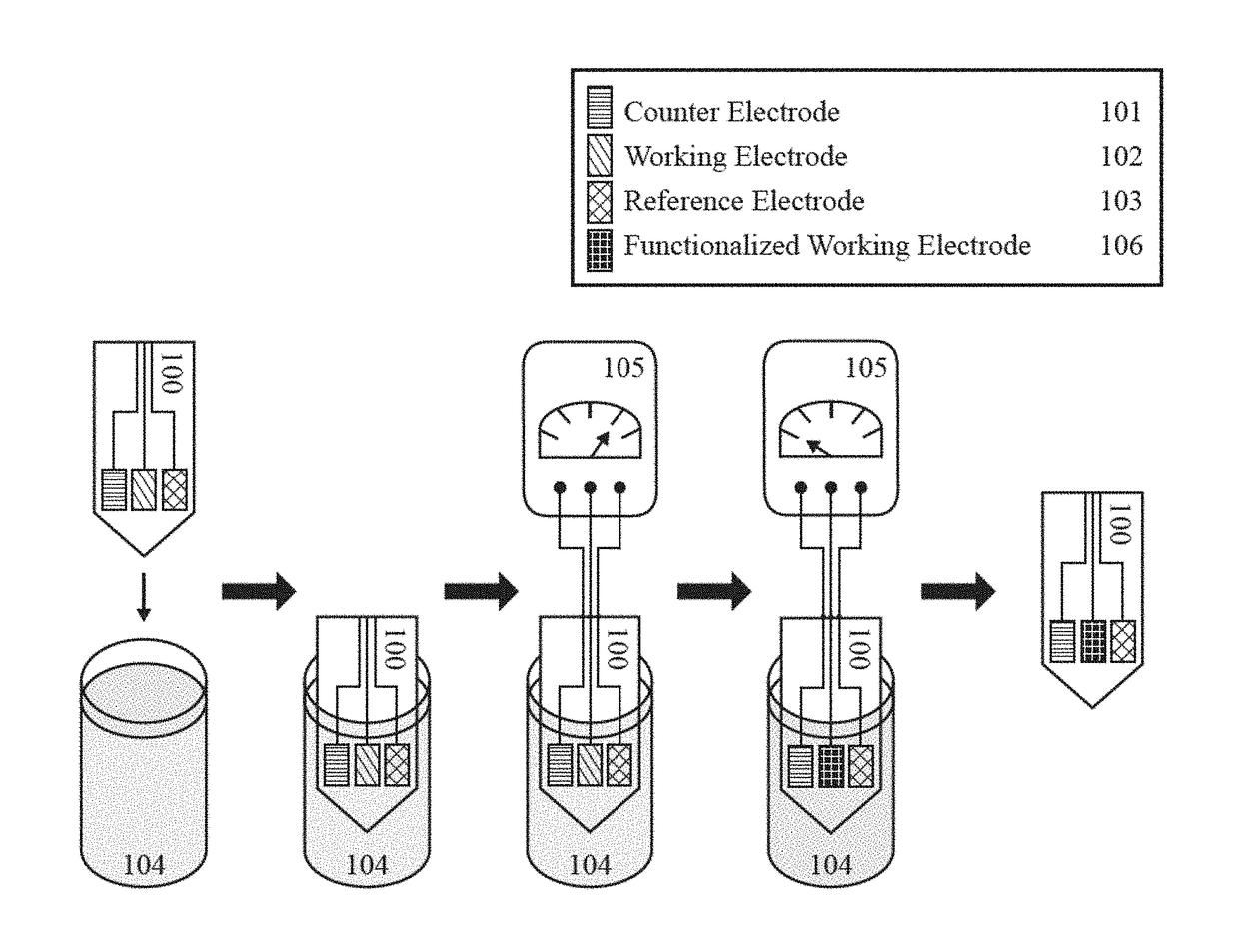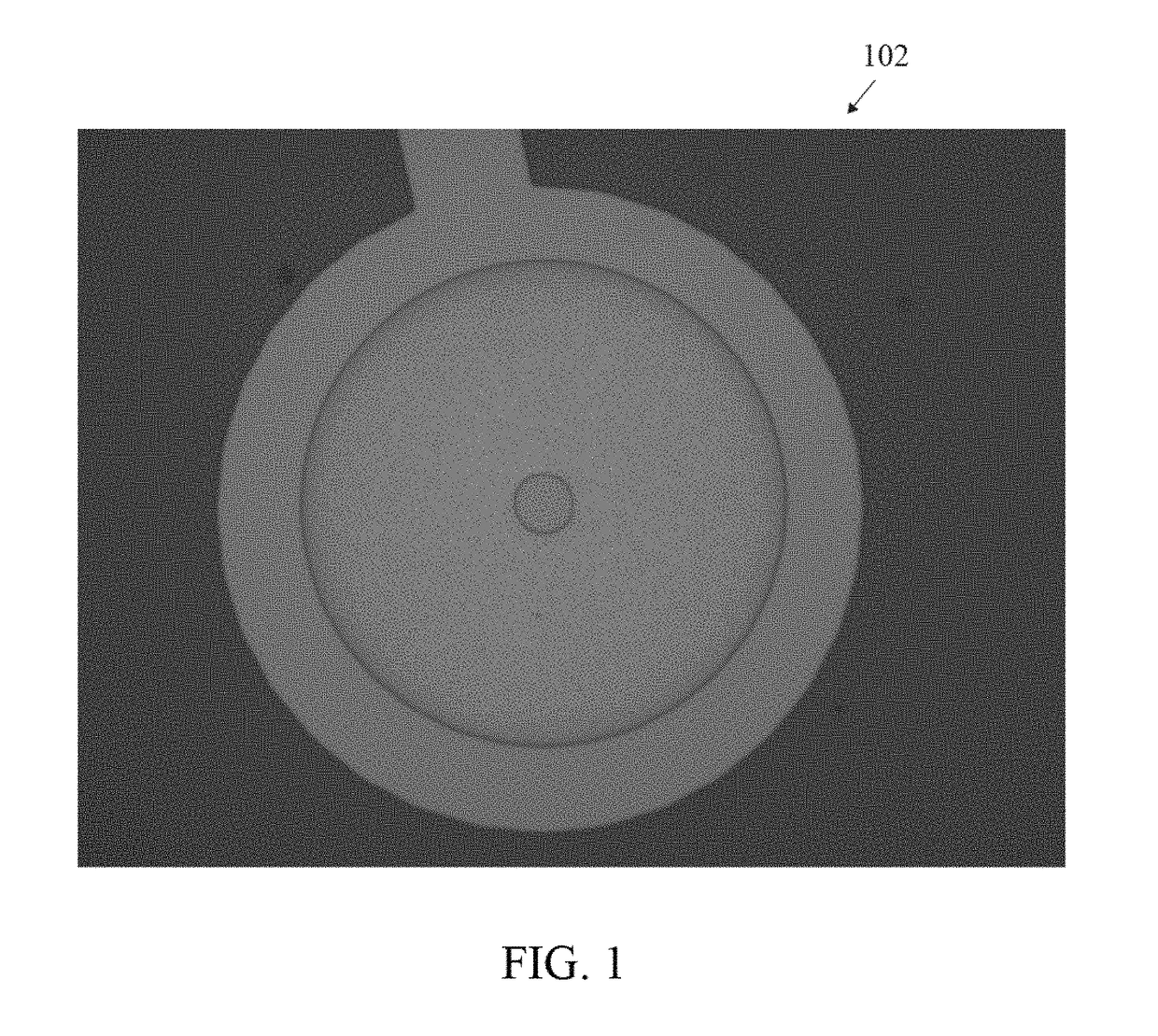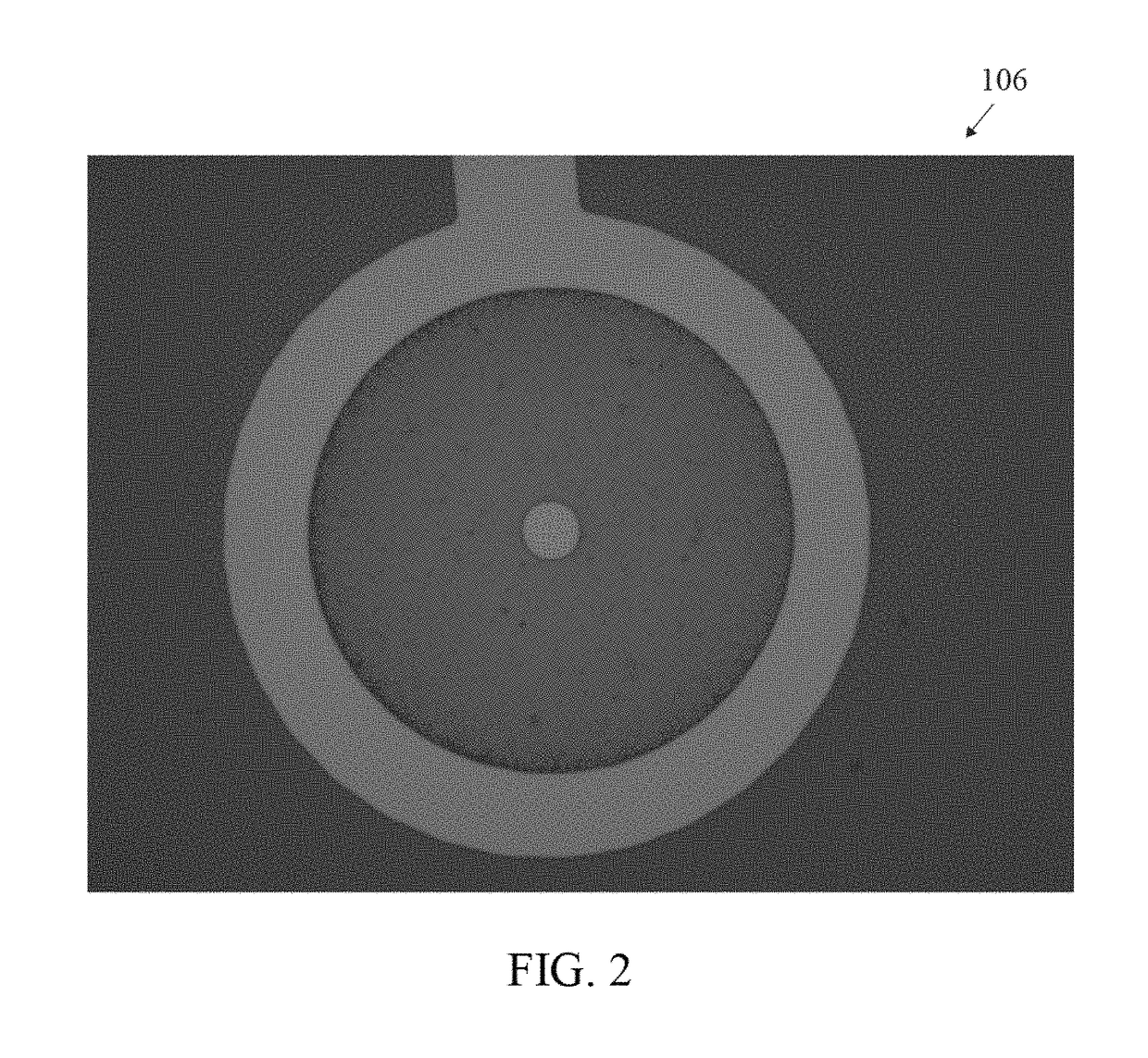Tissue-penetrating electrochemical sensor featuring a co-electrodeposited thin film comprised of polymer and bio-recognition element
a bio-recognition element and electrochemical sensor technology, applied in the field of electrochemical sensors, can solve the problems of low throughput and high device cost, devices that have not leveraged high-volume automated manufacturing processes to fabricate electrochemical sensors with high yield and uniformity, and high cos
- Summary
- Abstract
- Description
- Claims
- Application Information
AI Technical Summary
Benefits of technology
Problems solved by technology
Method used
Image
Examples
Embodiment Construction
[0037]One embodiment is a tissue-penetrating electrochemical sensor device for the quantification of a chemical or biochemical entity in a physiological fluid. The device preferably comprises a tissue-penetrating electrochemical sensor comprising at least one spatially-defined working electrode, and a conducting polymer film comprising an organic electroactive monomer precursor and at least one biorecognition element. The organic electroactive monomer precursor and the at least one biorecognition element dispersed uniformly and physically entrapped in the conducting polymer film. The conducting polymer film is produced by immersing the tissue-penetrating electrochemical sensor in a solution containing the at least one biomolecular recognition element and the organic electroactive monomer precursor which is dissolved in the solution, and wherein application of an oxidizing potential or a reducing potential at the spatially-defined working electrode causes the co-electrodeposition of ...
PUM
| Property | Measurement | Unit |
|---|---|---|
| voltages | aaaaa | aaaaa |
| voltages | aaaaa | aaaaa |
| thickness | aaaaa | aaaaa |
Abstract
Description
Claims
Application Information
 Login to View More
Login to View More - R&D
- Intellectual Property
- Life Sciences
- Materials
- Tech Scout
- Unparalleled Data Quality
- Higher Quality Content
- 60% Fewer Hallucinations
Browse by: Latest US Patents, China's latest patents, Technical Efficacy Thesaurus, Application Domain, Technology Topic, Popular Technical Reports.
© 2025 PatSnap. All rights reserved.Legal|Privacy policy|Modern Slavery Act Transparency Statement|Sitemap|About US| Contact US: help@patsnap.com



